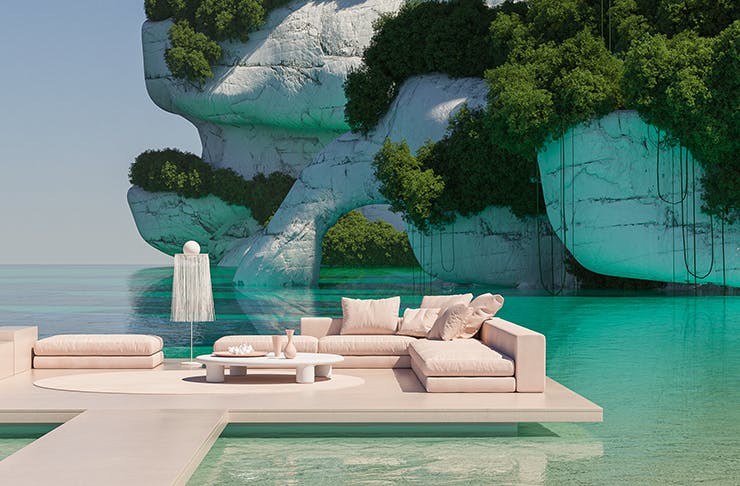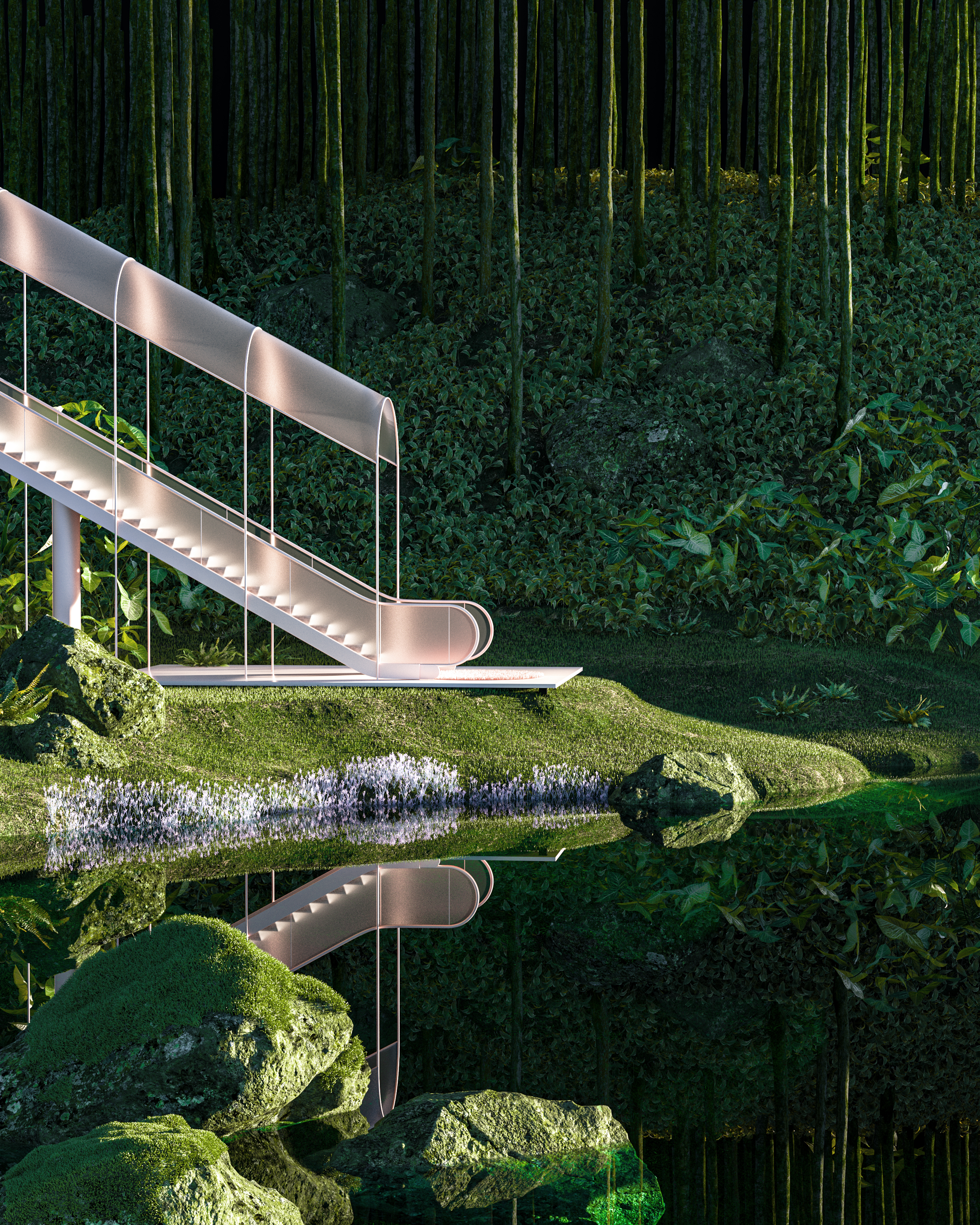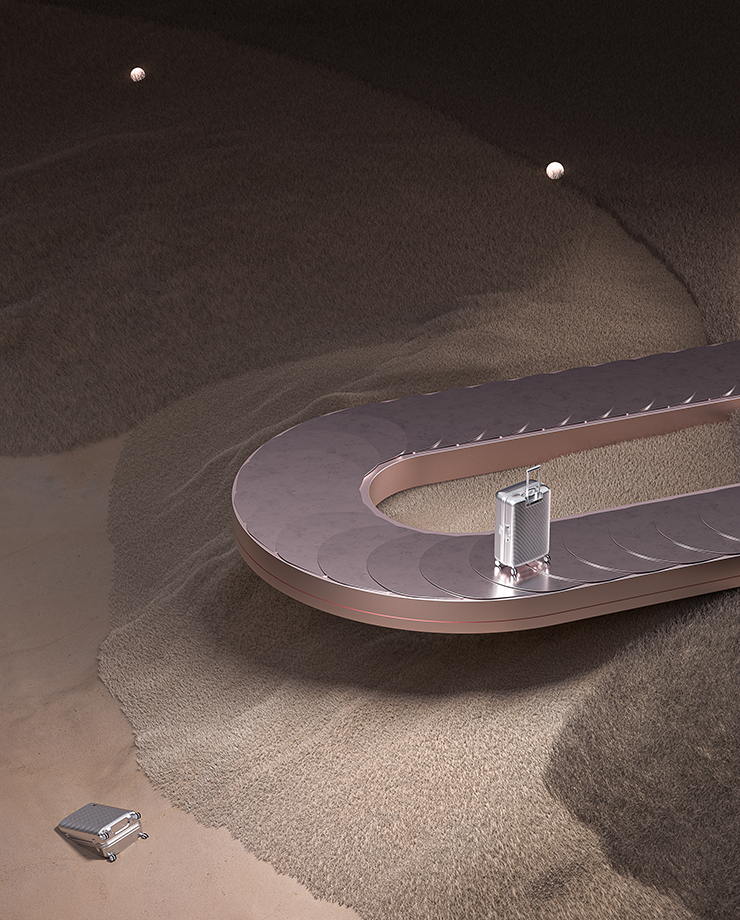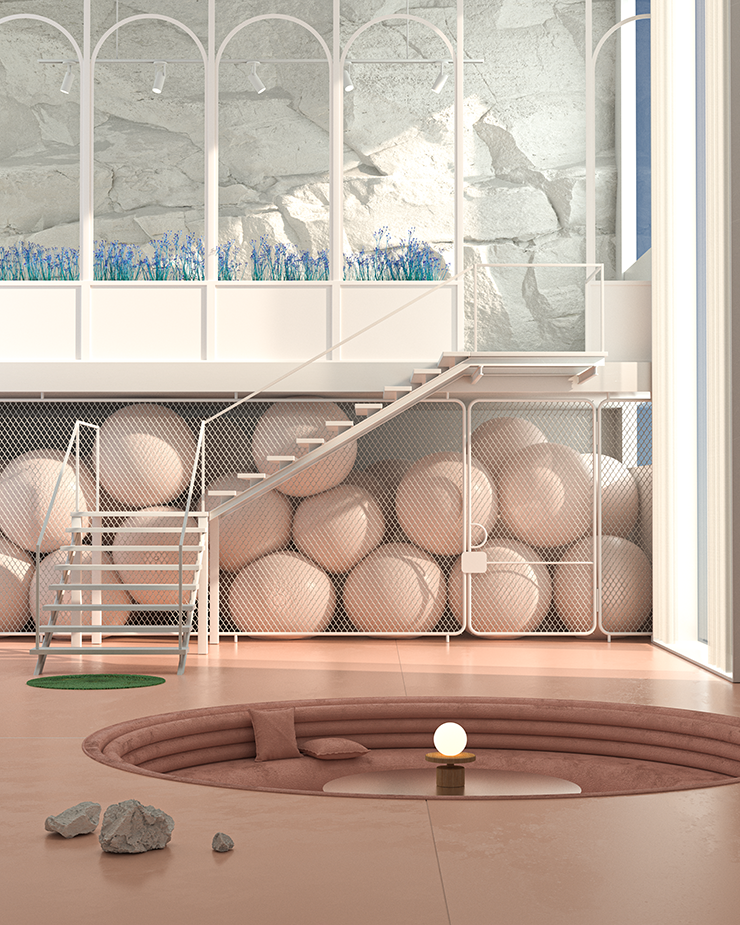If you have an Instagram account, you’ve probably seen Paul Milinski’s magnificent paintings at least a few times in your feed. The graphic designer and creative director from Melbourne has gone from 300 to 300k+ followers in a couple of months, and with good cause.

His unique portrayals of lush landscapes juxtaposed with the human-made world have been recognized and reshared by Vogue, HYPEBEAST, and Instagram’s official design account, among others. And now, Milinski tells us how it all began, where it is now, and where it is headed.

You’re producing some truly one-of-a-kind works that are gaining international notice. Where did it all begin?
Since I was a child, I’ve had a strong passion to produce art. I’d often be found in the corner of the room with my crayons, drawing sharks and Ninja Turtles.

Although the desire to make artwork in 3D came later in life, when I became attracted with 3D film and video games. The potential of adding a third dimension to my artwork was too appealing to pass up. If you appreciate my work, please credit Pixar and Tony Hawks Pro Skater.
Can you explain the contrast between organic and man-made worlds in your work?

Within an artwork, juxtaposition can be a strong technique to ask a topic without being precise. Creating contrast leaves a lot of room for interpretation. Some of my paintings raise concerns about our current living conditions. Are we overly focused on the artificial? Should we work harder to incorporate ourselves into the natural environment?

Along with this, I like to push myself, and coming up with novel juxtapositions can be a problem, but it keeps my head artistically fit.
Is your surroundings influencing your output?

My surroundings influence my production in two ways: the efficiency with which I create the artwork and the topic matter.
To finish these pieces, I need to maintain an uninterrupted flow. This entails being alone for extended periods of time with no distractions. I can frequently concentrate for 15+ hours in a row.
Another aspect of my environment that influences my productivity is the fact that I live in a city. This could explain why my artwork is covered in natural components. If I lived in the bush, I’d most likely be drawing cityscapes. We appear to generate what we lack in our life. And it appears that my link with Mother Nature has been severed.
You’re employing CGI and 3D rendering software to make art that is more commonly associated with architecture and technical results. What appeals to you about this medium?
Traditional illustration is constrained by the angle of your strokes and the atmosphere you create. Something as easy as wishing to change the perspective necessitates the time-consuming job of producing an entirely new image. Working with a 3D application avoids the need for a restart because you have total control over these parameters. A change in illumination or an angle shift is only a mouse click away.
It’s a nice privilege to be able to art direct certain areas of your image until you send your scenario to render.
Your work speaks for itself, but Instagram has played a significant role in getting it out there. Have you taken use of it?
Instagram has been a roller coaster ride for me. Doors are opening up in places I had no idea existed. It has made me realize how important it is to be open to new opportunities. I take use of it by allowing others to come up with other approaches to implement my ideas. I’m both shocked and humbled to see a group of brains defining my path.
Should every creative use networks like Instagram?
I believe that all creatives should be on Instagram. Every month, there are over 500 million active users on the network. A substantial portion of the crowd could be your new target audience. You will undoubtedly want to be on it if your unique brand of art is visual.
Then there’s the nasty and the ugly that comes with the good. There are those who will steal your work, plagiarize it, not acknowledge you, and profit from it. But this has always been the case. It existed prior to Instagram and will continue to exist after Instagram on any platform.
You’ve received some unusual requests for collaborations and projects, in addition to your 300k+ following. What have been some of the more surprising?
Marriage proposals and demands to pluck my brain from my head so they can have my ideas would be high on my list. The more surprising offers come from ropeway businesses in Europe who want to build the cable car from ‘The Peninsula’ artwork. There have also been inquiries about designing hotels, which is extremely intriguing.
The creative business is notoriously difficult to break into, both as an artist and in the commercial space. Any advice for people just starting out in their careers on how to get their foot in the door?
This is an excellent and crucial question. To land a job in the commercial creative area, you’ll need a well-crafted portfolio. You will need to demonstrate a wide range of talents in this folio because businesses are searching for people who can be placed on a variety of projects that differ from one another and require numerous skill sets. It’s pointless to apply for jobs if all you have in your portfolio are hand drawings of cats. It’s doubtful that your employer will get requests for hand-drawn cats on a regular basis. A variety of brand identity systems, logo work, illustration, interface design, photography, typography, and layout design should be included in your folio.
I frequently deal with people who claim that they have never worked in the field and hence have nothing to create. If this is the case, current brands can be redesigned. Pretend you’ve been entrusted with rebranding a brand that you like or despise. It demonstrates amazing initiative and is far more impressive than showcasing Uni restaurant menu designs. If you show compelling instances of these design elements, you’ll not only have your foot in the door, but the rest of your body as well.
Coincidentally, if you want to make it as an artist, you should be sketching cats exclusively, since this will help develop your signature style and allow you to become instantly identifiable. As artists, inspiration can hit us hard and force us to produce a wide range of things. This, however, can be counterproductive to our goal because the irregularity makes it difficult for the spectator to recognize you. This can leave you feeling as if you lack a “artistic personality” and can cause acute decision fatigue. It can help to put in place—what I call creative barriers—a set of rules that you create to avoid being sidetracked by external inspiration so you can find your voice and master it.
My creative limitations include: only using 3D apps as the medium, adhering to a specific color palette, limiting textures, establishing a juxtaposition, and redoing things that already exist that I believe are not appealing. When I follow these criteria, I can find my own artistic voice.
Your consistency in medium or subject choice serves as your brand identity. You can start expanding on your artistic expression once you’ve given your audience something to hold onto.
Aside from generating these incredible works of art, you also co-founded your own creative agency. How do you balance the two?
Fortunately, I have a fantastic business partner, Dan, who is an organizational and creative dynamo who can manage a lot of the day-to-day operations.
However, I normally follow the 80-20 rule. This means that I spend the majority of my days focused on our creative agency Vaulter, and it is only when I have time to escape to the third dimension.
What’s next in the works?Exhibitions?INSTALLATIONS? COLLABORATIONS?
Several projects are currently in the works. I’m working with an interior designer to develop a completely equipped digital house. We just posted some teaser photographs for it. Loftgarten is a new company I’m establishing with a business partner that is closely related to 3D. Once we can go outdoors again, we will film an amazing video to commemorate the introduction of that. I’m also considering holding an actual display of my art. We are investigating a possibility that has presented itself, pending COVID. There may also be potential to further develop my work in the virtual reality sector, which I am particularly interested in. In addition, I’ll be producing prints of my artwork soon, which will be announced soon.